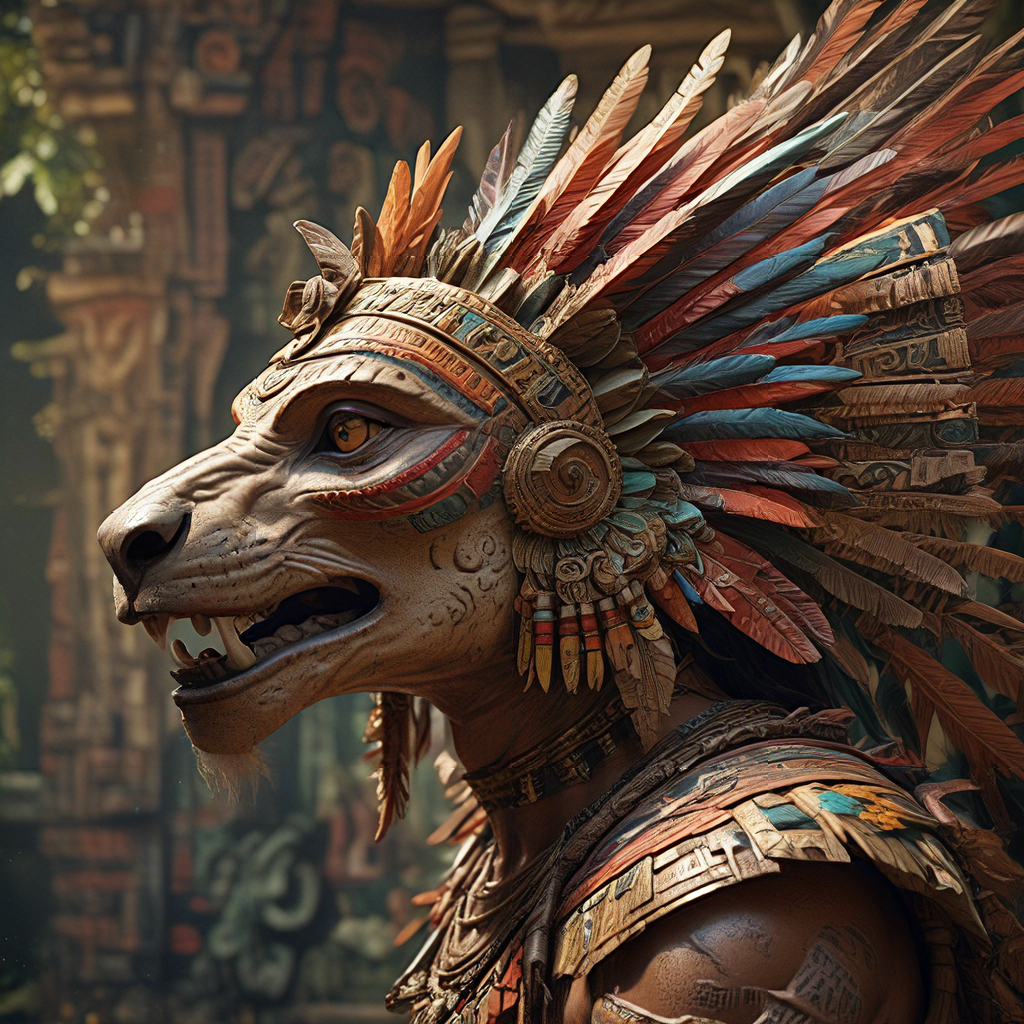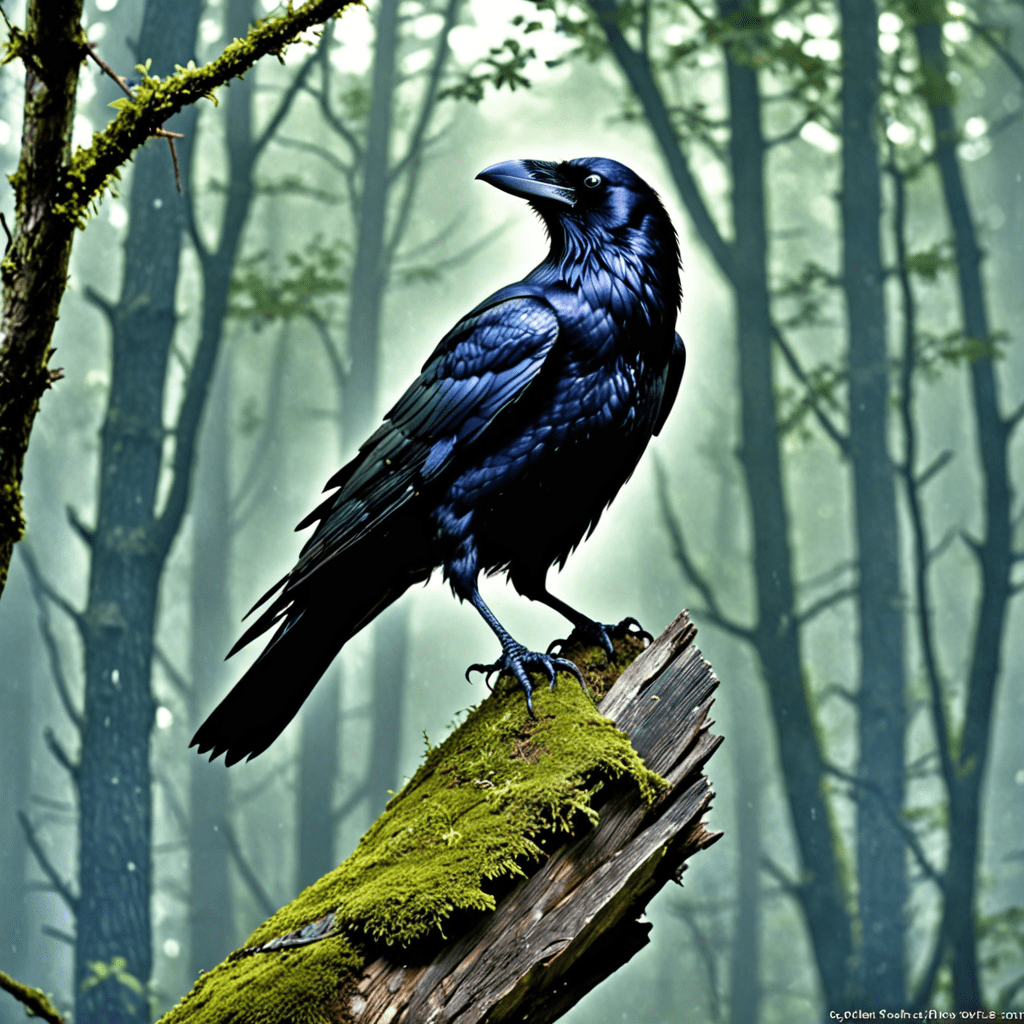The Aztec Cosmology and the Realm of Mythical Beasts
The Aztec civilization, renowned for its intricate calendar system, complex social structures, and breathtaking architecture, possessed a rich and vibrant mythology teeming with fascinating creatures. Rooted in the belief that the world was created and sustained by powerful gods, their mythology provides a window into the Aztec worldview, where supernatural beings played a crucial role in shaping the destiny of humanity. These mythical beasts, often intertwined with the forces of nature, served as potent symbols of power, transformation, and the interconnectedness of the cosmos.
A Glimpse into the Aztec Pantheon
The Aztec pantheon was a sprawling tapestry of deities, each representing a distinct aspect of the natural world or human experience. From the sun god Tonatiuh, whose rays brought life to the land, to the rain god Tlaloc, whose tears nourished the crops, the Aztec gods were deeply integrated into the daily lives of the people. These deities were not simply abstract entities but powerful presences that intervened in human affairs, offering guidance, dispensing justice, and demanding sacrifices. Some deities, like Tezcatlipoca, the god of night, were associated with darkness, chaos, and the unknown, while others, such as Xochiquetzal, the goddess of beauty and love, embodied the finer aspects of human existence.
The Role of Mythical Beasts in Aztec Culture
Mythical beasts held a prominent position in Aztec culture, serving as both symbolic representations of divine powers and as potent elements in their elaborate storytelling tradition. These creatures, often hybrids of animals, humans, or celestial bodies, served as embodiments of the supernatural, embodying the unpredictable forces that shaped the world around them. They were invoked in rituals, incorporated into art and architecture, and featured prominently in myths and legends. The presence of these creatures reflected not only the Aztecs’ reverence for the power of nature but also their deep understanding of the interconnectedness of the human and the divine.
The Four Suns and the Creation of Mythical Beasts
According to Aztec mythology, the world we inhabit is the fifth creation, preceded by four previous suns, each destroyed by a catastrophic event. These events, often linked to the actions of powerful deities, played a significant role in shaping the world and the creatures that inhabited it. For instance, the fourth sun, associated with the god Tlaloc, was destroyed by a great deluge, a cataclysmic event that birthed new life forms. The fifth sun, the current era, is said to be sustained by the actions of the sun god Tonatiuh, who daily traverses the sky, providing light and warmth. This cyclical pattern of destruction and creation, a core principle in Aztec cosmology, provides a context for understanding the role of mythical beasts as agents of transformation and rebirth.
The Celestial Serpent: Quetzalcoatl and the Cosmic Order
One of the most significant mythical beasts in Aztec lore, Quetzalcoatl, the feathered serpent, represents the forces of creation, knowledge, and the cosmic order. Quetzalcoatl is a powerful deity, associated with the planet Venus, and is often depicted as a serpent with feathers, symbolizing the duality of earth and sky, physical and spiritual realms. This celestial serpent plays a crucial role in maintaining the harmony of the universe, guiding the sun and stars across the sky, and overseeing the cycles of life and death. Quetzalcoatl’s presence in the cosmos is a constant reminder of the divine order that underpins the world, offering guidance and hope to humanity.
The Jaguar Warrior and the Transformation into a Fearsome Beast
The jaguar, a powerful symbol of strength and ferocity in Aztec culture, was more than just a wild animal. In Aztec mythology, the jaguar represented the duality of human and beast, the power of transformation, and the fierce warrior spirit. It was believed that warriors who achieved a high level of bravery and skill could tap into the jaguar's essence, acquiring its strength and ferocity. These warriors, known as "Jaguar Knights," were revered for their courage and their ability to embody the animal's power on the battlefield.
The transformation into a jaguar warrior was not just a physical change but a spiritual one. It was a journey of initiation and self-discovery, a quest for the warrior's true potential. Through rigorous training and rituals, warriors connected with the spirit of the jaguar, harnessing its power and becoming one with the beast. This transformation was often depicted in Aztec art, where warriors were shown adorned with jaguar skins, claws, and teeth, representing their connection to the animal's spirit.
The jaguar warrior was a powerful force on the battlefield, embodying the strength and ferocity of the animal. They were considered to possess supernatural powers, including the ability to see in the dark, move silently, and strike with deadly precision. The jaguar warrior was a symbol of Aztec strength, courage, and resilience, embodying the ideals of the warrior spirit and reminding the people of their warrior heritage.
The Coyolxauhqui, the Moon Goddess and the Aztec Myth of the Serpent Woman
In Aztec mythology, Coyolxauhqui, the moon goddess, is a fascinating and complex figure. She is depicted as a serpent woman, a powerful and enigmatic symbol of the moon's cycles and the mysteries of the night. Coyolxauhqui's story is intertwined with the creation myth of the Aztec capital, Tenochtitlan, and the rise of the sun god Tonatiuh.
According to legend, Coyolxauhqui was the sister of Huitzilopochtli, the sun god, and the daughter of the goddess Coatlicue. Coatlicue, the mother of the gods, was impregnated by a ball of feathers, which angered her children, including Coyolxauhqui. Enraged, Coyolxauhqui rallied her brothers and sisters to attack and kill Coatlicue. However, Huitzilopochtli, born from the feathers, emerged from his mother's womb fully armed and ready to defend her. In a fierce battle, Huitzilopochtli defeated Coyolxauhqui, dismembering her and scattering her body parts across the sky, creating the constellation of the Pleiades.
Coyolxauhqui's story reflects the complex relationship between the sun and the moon, light and darkness, and creation and destruction. Although defeated by her brother, Coyolxauhqui remains a powerful figure in Aztec mythology, representing the moon's eternal cycle, femininity, and the enduring power of the night.
The Xiuhtecuhtli, the Fire God and the Myth of the Fire Serpent
Xiuhtecuhtli, the Aztec god of fire, is a powerful deity who embodies the transformative power of flames. Often depicted as a skeletal figure with a fire serpent coiled around his head, Xiuhtecuhtli represents both the destructive and creative aspects of fire. He is associated with heat, energy, and the cycle of rebirth, and his presence is felt in the sacred flames that illuminate the world.
One of the most notable myths surrounding Xiuhtecuhtli involves his association with the fire serpent, a mythical creature that embodies the power of flames. In Aztec mythology, the fire serpent was believed to represent the celestial fire that caused droughts and brought forth the seasons, and it was also said to be the guardian of the underworld.
The fire serpent is a symbol of the cyclical nature of fire, its ability to destroy and create, burn and nourish. This duality is also reflected in Xiuhtecuhtli's role as a god of both fire and the underworld, reminding us of the transformative power of fire and its connection to the cycle of life and death.
Theories on the Origin of Aztec Mythical Beasts
The rich tapestry of Aztec mythology is filled with fascinating creatures, each representing a unique aspect of the world and the interconnectedness of nature and the divine. But what inspired these myths? How did they come into being? Several theories have been proposed to explain the origins of Aztec mythical beasts:
- Influence of Nature: The Aztec civilization was deeply connected to its natural surroundings, and their myths reflect a profound understanding of the animal kingdom and the natural world. The jaguar, the serpent, the eagle, and other powerful creatures that feature prominently in Aztec mythology likely arose from observation and admiration of the natural world.
- The Power of Metamorphosis: The idea of transformation and metamorphosis was central to Aztec belief systems. The myths often depict deities and heroes transforming into animals or hybrid creatures, reflecting the Aztec belief that the essence of life was constantly changing and evolving.
- Symbolic Representation: Mythical beasts often served as symbolic representations of spiritual concepts, such as power, fertility, and the cycle of life and death, offering a way to understand and express the abstract ideas that shaped their worldview.
The Influence of Nature and the Power of Metamorphosis
The Aztec civilization flourished in the vibrant and diverse landscapes of Mesoamerica, a region teeming with life and abundant natural resources. The Aztec people were deeply connected to their environment, observing the patterns of nature, the behavior of animals, and the influence of the seasons on their lives. This close relationship with nature deeply influenced their mythology, shaping their understanding of the world and their place within it.
The Aztec worldview was also characterized by a profound awareness of the power of transformation and metamorphosis. They believed that life was a cyclical process, a constant ebb and flow of creation and destruction, and that human beings were capable of undergoing profound changes in their lives. This belief is reflected in many Aztec myths, where deities and heroes transform into animals, hybrid creatures, or even celestial bodies, showcasing the fluid and dynamic nature of existence.
The influence of nature and the power of transformation are evident in the Aztec mythology's mythical beasts. The jaguar, for example, embodies the power and ferocity of the animal, but also represents the potential for human transformation and the warrior's journey to tap into their own inner strength. The serpent, a creature that sheds its skin and regenerates, symbolizes the cycle of life and death, regeneration, and the cyclical nature of existence. The myths of Aztec mythical beasts offer a glimpse into the Aztec worldview, showcasing their reverence for nature, their fascination with transformation, and their deep understanding of the interconnectedness of life.
FAQ
What are some of the most famous mythical beasts in Aztec lore?
Some of the most famous mythical beasts include Quetzalcoatl, the feathered serpent; the jaguar warrior; Coyolxauhqui, the serpent woman; and the fire serpent associated with the god Xiuhtecuhtli.
What is the significance of mythical beasts in Aztec culture?
Mythical beasts played a significant role in Aztec culture, representing divine powers, embodying the unpredictable forces that shaped the world, and serving as potent elements in their storytelling tradition.
What are some theories on the origin of Aztec mythical beasts?
Theories on the origin of Aztec mythical beasts include the influence of nature, the power of metamorphosis, and the use of symbolic representation.
How did the Aztecs view the relationship between humans and mythical beasts?
The Aztecs believed that humans could tap into the power of mythical beasts through rituals, training, and spiritual transformation. Warriors, in particular, sought to embody the strength and ferocity of the jaguar, while other individuals might seek to connect with the wisdom and power of serpents or other creatures.
What role did mythical beasts play in Aztec rituals and ceremonies?
Mythical beasts were often invoked in rituals and ceremonies, symbolizing the power of the gods, the cycles of nature, and the spirit world. For example, the jaguar was associated with war and sacrifice, while the serpent was connected to fertility and the underworld.



